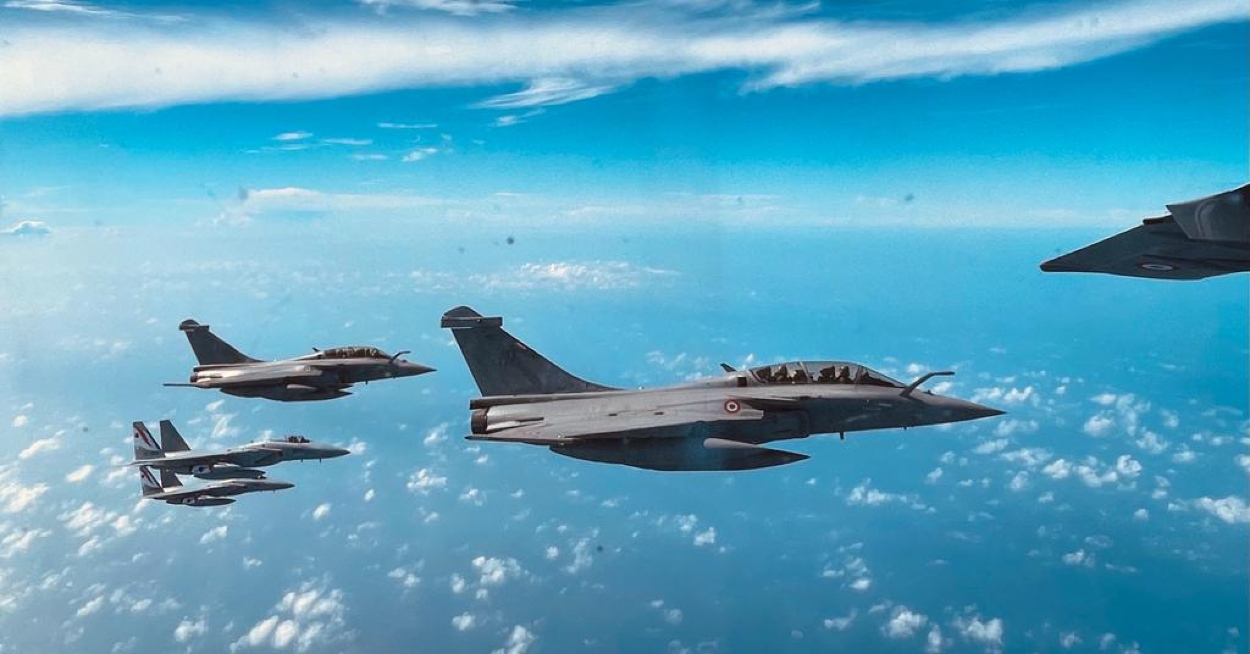Japan is reportedly gearing up to deploy fighter jets in Australia on a rotational schedule starting in the upcoming fiscal year to conduct collaborative exercises to bolster defense capabilities against potential threats.
US Solidifies Air Force Presence ‘Down Under’ In Australia To Counter China’s Aggression In Indo-Pacific
Japan-based Asahi Shimbun, citing sources, reported that anticipated rotation is set to span several months each year, with several fighter aircraft, including the F-35, F-15, and F-2, poised for deployment simultaneously.
Under the planned rotational deployment, a designated Air Self-Defense Force fighter unit will be stationed at an Australian air base for a specified duration.
The envisioned joint exercises will be executed within the framework of Japan’s exercise of collective self-defense, with the Self-Defense Forces poised to counter a potential military attack on Australian forces.
The report, citing officials from the Defense Ministry, further added that the primary objective behind the rotational deployment is to facilitate training across vast airspace, with its legal underpinning found in Article 4 of the Law for Establishment of the Defense Ministry, which specifically addresses the educational and training responsibilities of the Self-Defense Forces (SDF).
While Japan has previously deployed Ground and Maritime SDF units to a base in Djibouti for anti-piracy operations in the Gulf of Aden, located off the coast of Somalia in eastern Africa, there have been no prior instances of overseas SDF deployment for training purposes.
The concept of rotational deployment was formally introduced as part of the National Defense Strategy, one of the three revised security-related documents that the government adopted at the end of last year, marking a significant development in Japan’s defense approach.
The joint exercises, facilitated by the rotational deployment strategy, are poised to be conducted with a strategic scenario in mind.
However, the backdrop to such collective defense preparations finds its roots in the national security legislation enacted in 2015.
This legislation granted Japan the authority to partially exercise the right to collective self-defense, particularly when a neighboring country faces an attack that directly jeopardizes Japan’s security.
During discussions in the Diet, Japan’s government explained the potential situations where this authority might be invoked.
These situations include protecting US naval vessels engaged in missile defense in case of contingencies on the Korean Peninsula and clearing mines in the Strait of Hormuz, situated in the Middle East. This legislation reflects a significant shift in Japan’s defense posture and its commitment to regional security.
Japan-Australia Cooperation Expands
In response to China’s ongoing military expansion, Japan and Australia have significantly strengthened their security cooperation in recent years.
This strategic collaboration gained momentum in January 2022 when Tokyo and Canberra signed a Reciprocal Access Agreement (RAA), streamlining entry procedures for joint exercises.
Further cementing their partnership, defense ministers from both countries convened in the Japanese capital on October 19, concurring using the RAA to establish a robust history of joint training.
To assess potential challenges associated with rotational deployment, the Air Self-Defense Force (ASDF) dispatched four cutting-edge F-35A stealth fighter jets to Australia in August and September, marking a historic first.
This move toward rotational deployment in Australia is underpinned by concerns over China’s expanding maritime presence.

It is driven by the idea that the Self-Defense Forces (SDF) will gradually assume responsibilities traditionally held by the US military, thereby heightening the risk of Japan’s involvement in armed conflicts.
Speaking to EurAsian Times, Arijita Sinha Roy, a researcher at the Centre For Joint Warfare Studies (CENJOS), has pointed out that Japan’s initiatives to bolster its capabilities are connected to the growing assertiveness of the Chinese military in the region.
Roy explained that the security landscape in East Asia is currently fraught with volatility, prompting countries like Japan to prioritize bolstering their military and civilian capabilities.
She highlighted the concerns surrounding China’s actions in regions like Taiwan and the South China Sea, noting that these actions could potentially lead to significant political and military repercussions, possibly resulting in a situation more dire than the ongoing conflict between Russia and Ukraine.
Nonetheless, the collaborative effort aims to enhance Japan’s integration with Australian and US forces, thereby bolstering the capabilities and competence of the Self-Defense Forces (SDF) in their interactions with allies and partners.
Moreover, it lays the groundwork for the potential for coalition operations in the event of regional conflicts, fostering a more robust and effective response to security challenges in the region.
- Contact the author at ashishmichel(at)gmail.com
- Follow EurAsian Times on Google News